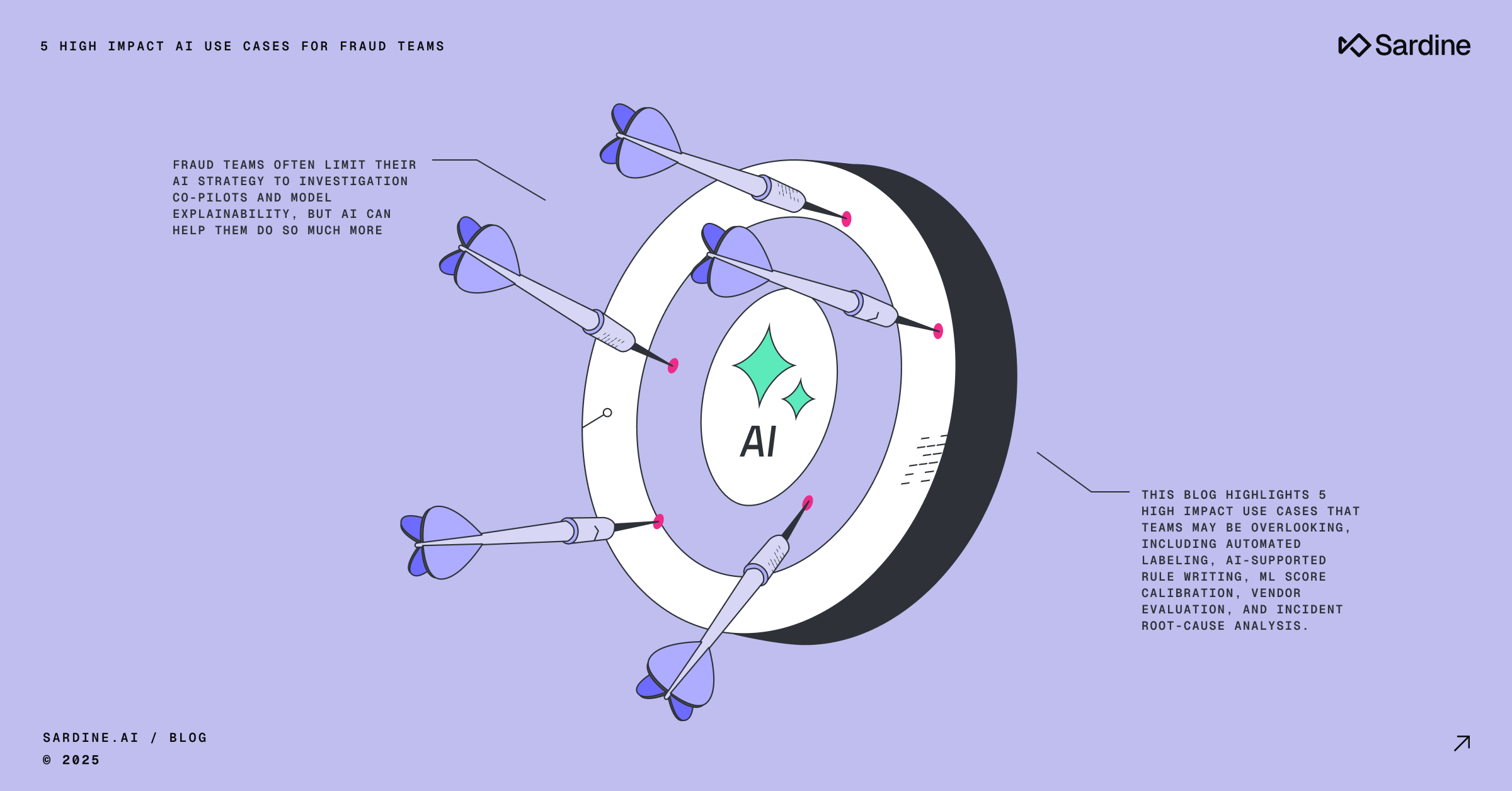Blockchain and Sardine are redefining partnerships
The word partnership gets thrown around a lot lately. “Hey, we should partner!” This is the opening line of every business development pitch in your LinkedIn inbox, but at Sardine, partnership means much more than “become a client and buy from us.”
When we partner, we go all in.
One of our key partners is Blockchain.com. Since implementing Sardine, they’ve already seen card fraud decrease and reduced false positives without a drop in legitimate customer volumes.
Put another way. Less fraud, zero increase in false positives.
Performance is everything, and Blockchain.com’s success is something we’ll keep working together on because Fraud is constantly evolving, and risk can never be eliminated. When evaluating fraud partners, Blockchain.com looked for three things.
- No black boxes (sharing data)
- Sharing signals, not just scores
- Working as one team
Partners share data.
Returning a score without context isn’t helpful.
Often fraud tools will only give a score (e.g., a single output like low, medium, or high risk or 0 to 999). Operators must trust how the vendor got to a medium or high-risk decision, but that might not work for their business or geo. These fraud solutions must sit within the fraud teams’ payments and risk stack. They’re usually not the only platform; they sit alongside internal tools and other 3rd party solutions.
A high score could be a false positive for one business but a fraudster for another. Each company’s fraud and risk team understands its risk model best.
Every false positive is a lost sale and lost revenue.

Sardine’s platform returns everything in an API response. Our partners are then free to use that as they see fit. Either they can let the Sardine platform recommend a response, create a rule from the data or use it to feed an internal system or queue.
Fine-grained signals are essential
In fraud prevention, each data point is a signal, but each signal means different things depending on the scenario. For a business that operates cross-border payments, having many devices and users making foreign transactions is a usual behavior; for others, it might not be.
Sardine provides a unique mix of device and behavior signals, allowing partners to pull those into their ML models and rules engine. We also provide anomaly detection, where if something looks suspicious, we’ll send that signal based on what we see in our network.

Historically, device or behavior signals were built to find e-commerce fraud, but the Fintech wallet, Crypto, and money-loading use cases are much more complex. These use cases need to look for different patterns and risks.
As every company becomes a Fintech company, we’re finding that every company is wrestling with wallet, funding, payment scams, and fraud use cases. Fine-grained signals are especially valuable for our enterprise clients, who have sophisticated fraud stacks and multiple vendors on a global stage.
Catching fraud means working as one team.
Every merchant, wallet, fraud prevention tool, and financial institution has the same aim: to reduce risk as much as possible without adding too much friction for good customers. However, each organization can only see its customers and associated risk data. Each of us holds a puzzle piece, but the bigger picture isn’t always clear unless we collaborate.
At Sardine, we aim to be the most proactive extension of your team you could wish to hire.

Together we have one goal — Safer, Faster payments.
Sardine understands how to get the most out of the data and ML we operate, and we’re constantly working to help partners get better performance.
Partners shape our roadmap and help us understand where we fit in their big picture.
If you’d like a partner who can help you get better performance contact us



%20(1).png)





.png)

